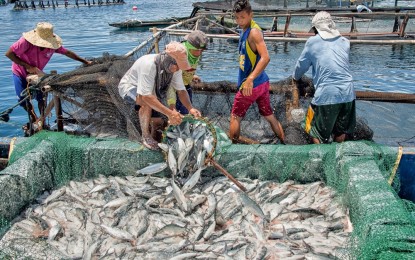
File photo from pna.gov.ph
AS NATURAL HAZARDS AND OTHER DISRUPTIONS ARE BECOMING COMMONPLACE, THE AGRICULTURE SECTOR NEEDS TO TRANSFORM AS RESILIENT SYSTEMS. Given the significant impact of typhoons and floods to the crop sector as experienced in 2020 or even in the years prior, agricultural farming systems must be resilient. This clearly requires increased percentage of Filipino farmers having internalized a decision-support system that would make them more agile and effective in responding to natural hazards and other potential external disruptions like the COVID-19 pandemic. These include improved access to climatic and weather data, stress-tolerant crop varieties, good agricultural practices, crop insurance system, extension system and modern technological support, and innovative financial capital.
LIVESTOCK AND POULTRY SECTORS NEED SYSTEMIC, LONG-TERM INTERVENTIONS TO MAKE IT SUSTAINABLE. As threats like the COVID-19 pandemic and a string of zoonotic diseases remain, comprehensive evaluation using One Health/EcoHealth framework is needed to operationalize how the livestock and poultry sector could achieve its triple bottom line of profit, people, and planet. Specifically, support is needed for improved access to better surveillance system, integrated biosecurity measures, and technology-based operation system. Consumers are likewise enjoined to be more aware and supportive of livestock and poultry products that conform with higher quality standards.
MORE SUSTAINED SUPPORT FOR THE IMPLEMENTATION OF THE PROVINCE-LED AGRICULTURE AND FISHERIES EXTENSION SYSTEMS (PAFES). In light of the Mandanas Ruling, there is a need for an expedited increase of the capacity of the local government units (LGUs) to implement agricultural development programs that must be technically sound and with high-level of social acceptance and participation. Hence, a more sustained support for the implementation of PAFES is needed to empower our LGUs.

